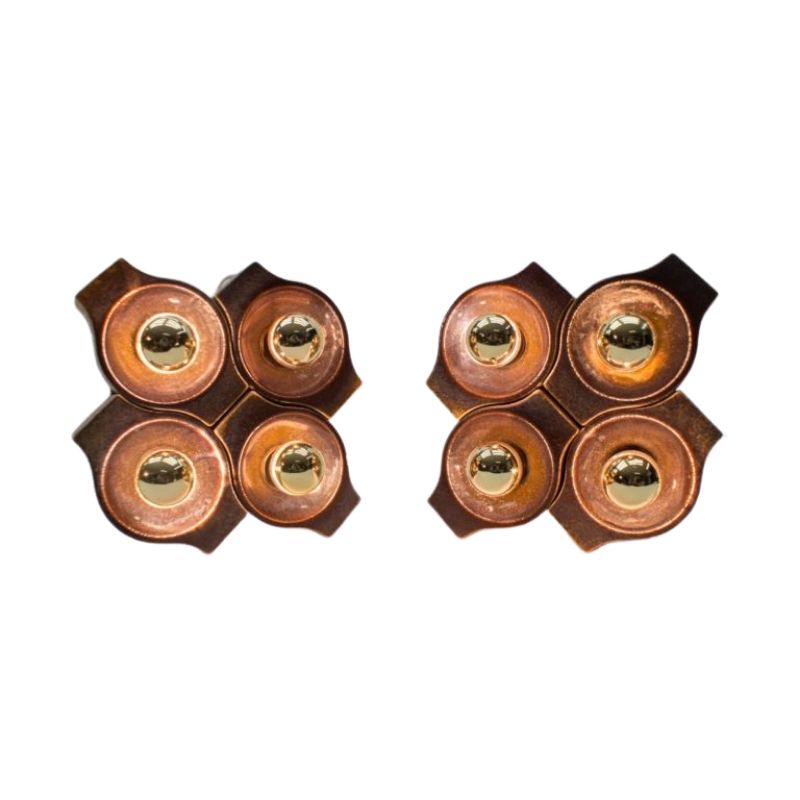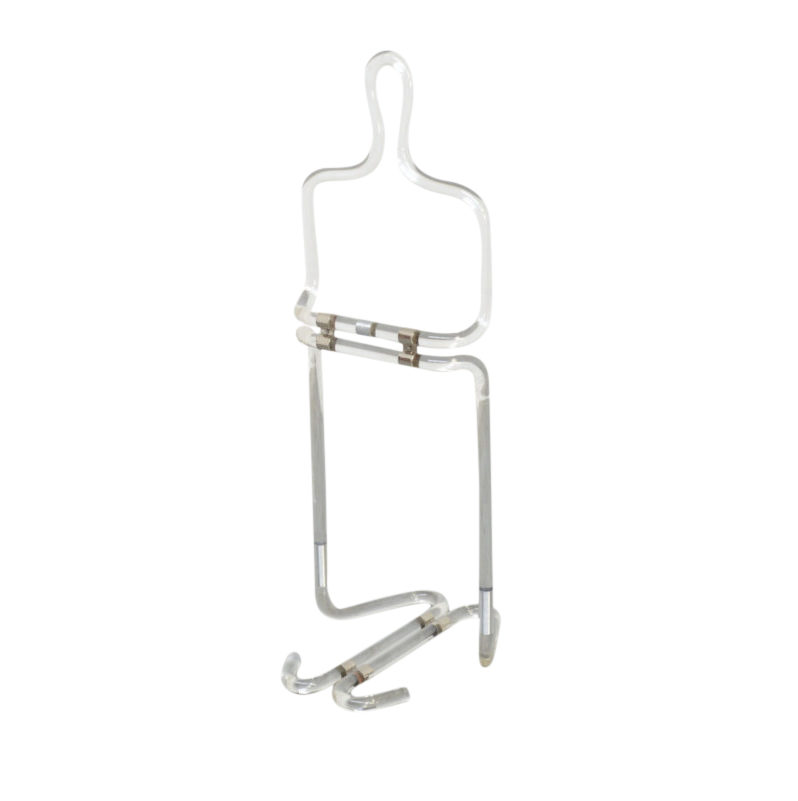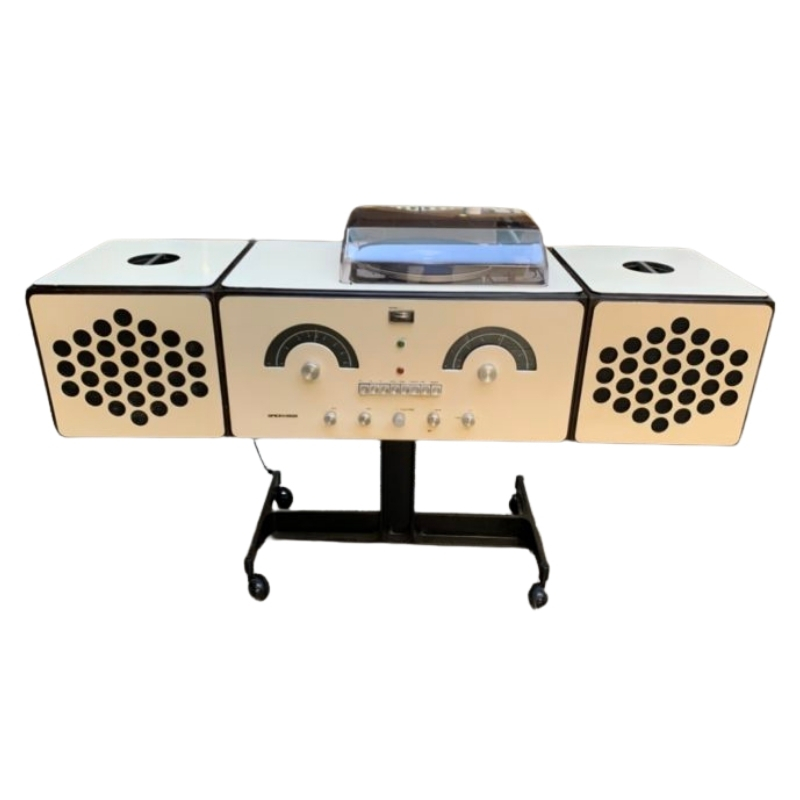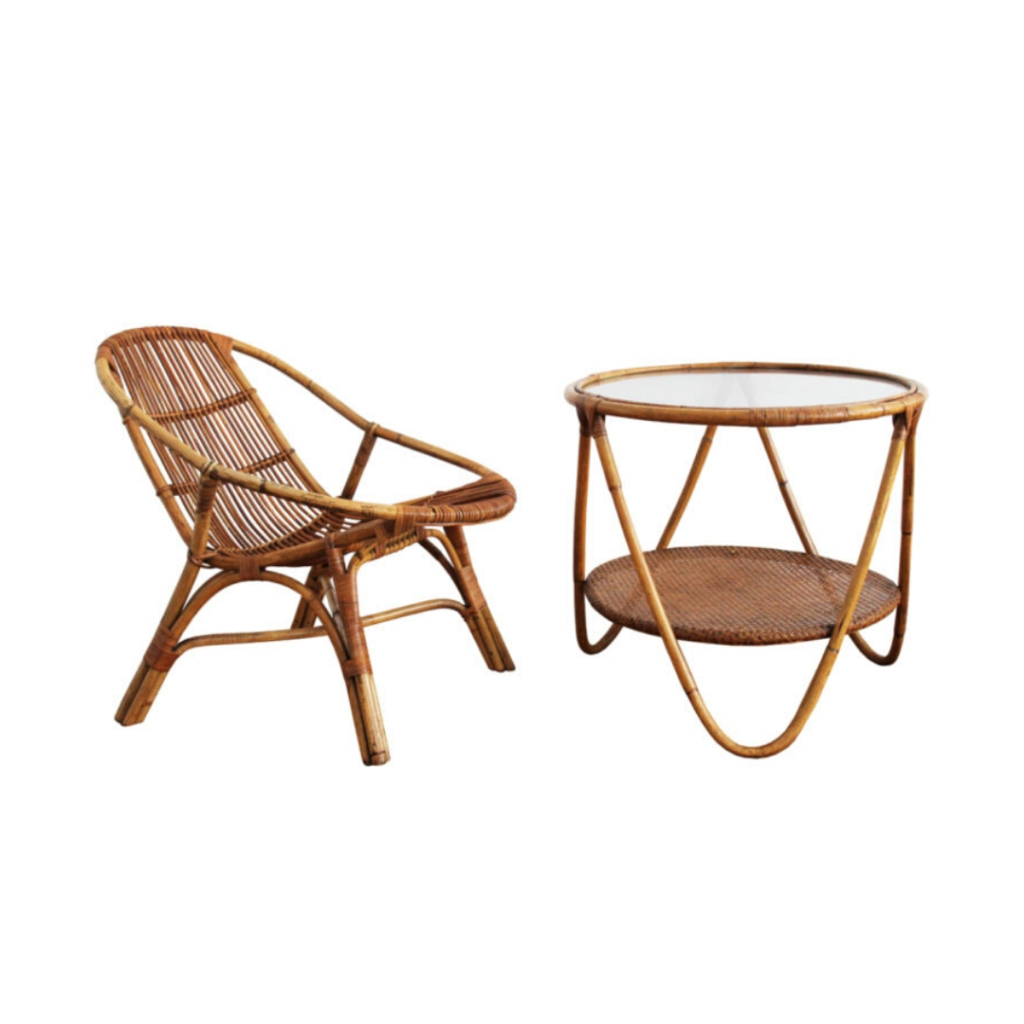I've never redone one of these but what I would do is to use L-nails. You can install them with the same spacing on Moller chairs (1" to 1 1/8" apart on the front and back rails with the nail on each end placed 1/4" in; 1/2" apart on the side rails---but when you get to the corner blocks, place the nails just 1/4" apart (or the width of two strands of cord). That will give you just enough room for 1 loop of cord on each nail and with one loop they will lie nice and flat and not ruin the smooth line at the low angle side view.
Always do an odd number of nails on front and back rails (same number on each); side rails don't matter.
That's how I'd do it, anyway. Purists might say to get a narrow crown stapler and redo them exactly like the original but I think the L-nail system is far superior in that it's very easy to redo the seat when it gets worn out or damaged, requiring just a few common, inexpensive tools. Can't say that about the Volther chair, unless someone knows something I don't. Which is quite possible.
With the blocks, it is going to be difficult to do the L nails. Furthermore, you would still have to do some stapling on the front/back rail, because you wont be able to wrap around it where the blocks are. I have 6 of these chairs right now, and fortunately the cord is in good shape, but I have thought about how I would re-cord if I found some that needed it. I always came back to stapling, as they are out of the factory.
I agree with everything Spanky says about L nail superiority, but I just dont see how you work around those corner blocks, and get a reasonably good result. I feel like these really need to be done with crown staples. Of course, I am always open to someone proving me wrong, as it would make it more likely that I might pick some of these up and take a stab at refinishing.
The block is very short grain so sinking L nails into it is risky. It would require pre-drilling. One of the risks is that the stresses on the seat combined with the nails split the block down the road. Probably not, but maybe. Some boards of Beech really like to split, others don't. Russian Roulette.
Possibly a row of finish head screws (much smaller diameter head) could be put into the frame at a 45 degree angle just below the block, leaving the head proud enough to hang cord on it. You couldn't do this with L nails because they would pull out at that angle. The threads on the screws would solve the problem. And this would require pre-drilling too.
Or you use a stapler like the factory did. I always prefer to duplicate the factory's techniques. I prefer to avoid pieces where I look down on how the factory did it, so I don't have to fight with the desire to "do it right." Of course, it is hard to be certain the factory did not know more than I did, and my idea of how to improve something is wrong. That is the challenge. I don't think that is the case here though. Frem's technique here was all about time savings.
In fact, I wonder if Frem could have purchased pre-woven seats held together temporarily in some manner and just stapled it on, basically like stapling on a very heavy weave fabric? The "upholsterer" would only have to wrap the front and rear rails leaving gaps for the warp strands. That would certainly be faster.
I think the L-nails could work with the corner blocks, with pre-drilling and staggering the line of nails. Tapped down all the way with just one loop of cord each, they would be just as flat against the wood as the stapled cord. The wraps of the front and back rails at the corners would be tricky--I'd probably just tack the loops in place with small wire nails rather than do all L-nails. I dunno. I just really don't like how these were done originally because they're not easy to redo the same way. Weaving wears out. Were they assuming the chair would be tossed when the seat was shot? Or did they think they'd be around forever and chair owners could have them redo the seats in the future? I don't get it.
The seats may well have been pre-woven and stapled on. Who knows!
Thanks for all of the valuable insights - exactly what I anticipated having read so many threads here!
I'm now thinking I might go back to the webbing-padding-vinyl plan. Seems like the easier route, especially for what would be a first-time corder, right?
If I go that route, does anyone have any thoughts about avoiding bulk underneath the frame? If I attach jute webbing on the top of the frame will I have enough support? Should I get some Phifertex mesh instead?
If you can't tell, you're dealing with an extreme novice - this is my first project like this. I've already refinished the teak and oiled it (it had a good amount of water damage and years of muck), but now I'm stumped by the seats. Any guidance is much appreciated!
Is Phifertex mesh the same stuff as found on old Danish chairs? I have seen the Danish stuff but it's been quite awhile. I seem to remember it having some stretch. Phifertex doesn't, really---it's just polyester mesh coated with plastic. Maybe it's a suitable substitute. I just don't know one way or the other.
I also don't know how upholstered Volther chairs were done, so consider my suggestions to be general tips.
As far as jute webbing---i'd go with heavy duty burlap (10 oz per yard, sold by upholstery supply shops online, not commonly found in local fabric stores or chain fabric stores). It will have the same feel as jute strip webbing but will look nicer on the underside of the chair and I think will produce less dust over time because there are no layers rubbing together every time someone sits in the chair.
I've seen heavy duty burlap used this way on old Danish chairs--can't think which chairs, and it's not super common, but I've definitely seen it.
There's also elastic webbing but I think it wears a lot on the foam layer above. Some old Danish furniture had knit thin knit fabric over the webbing.
A webbing stretcher will help. I think they're around $12 or so--just a simple wood board shaped to fit hand, with 5-6 lethally sharp little spikes at one end. There are no doubt a lot of videos online demonstrating how to use one.
Do you have a plan for fasteners? The options are upholstery tacks & a tack hammer, a staple gun, an electric staple gun, or a pneumatic staple gun & compressor. Having used all these methods extensively, I much prefer the last one. Like, no contest. But it's also the most expensive as far as investing in the tools.
Back to the chair. I think most dining chairs with webbing seats have just 1/2" foam. Cut this big enough to wrap around the rails, then use a safety razor blade to undercut it at approximately a 45 degree angle so that it will taper down to nothing when the vinyl is pulled around the rail.
I usually stick the foam to the webbing in the center of the seat, just to tack it in place. Use a heavy duty spray adhesive. 3M makes a good one that is widely available and you can get it from craft stores using their discount coupons that they're forever issuing.
Get foam from an upholstery supplier. The stuff sold in the chain fabric stores is junk, very low density.
Vinyl: avoid the stiffer ones, they're really hard to fit around the leg posts. There is a really nice vinyl at Joann Fabrics that is soft to the touch and pretty easy to work with- it was $40 per yard last time i checked but again, use a coupon. It's the stuff that looks like suede on the underside.
Vinyl may seem tough but it will tear pretty easily if you try to manipulate it the wrong way...or something. Leather is easier to work with, in my opinion, but that's a whole other ballgame.
That'll give you an idea of what lies ahead if you go this route. If you're meticulous and methodical, you might be able to pull it off. It would be a good idea to practice on something else first, though. Just to get the hang of getting the tension of the fabric even, and the tacking or stapling---stuff like that.
Glue the foam to the burlap or webbing in the center just to keep it from shifting around. See above for more info the adhesive to use. Oh, and spray very lightly and let it dry thoroughly, like for a day or two, before proceeding to the next step. This is because spray adhesive soaks into the foam and when the foam is only 1/2" thick, even a little is significant because when the foam is compressed, it will stick that way and not bounce back.
The foam will get mushed into place when you pull the vinyl around the sides to just inside the frame or at least covering the bottom edge of the rails. No need to fasten it down first. Smooth the leather from the center of the seat to the edges with the flat of one hand to get the most even tension, then put a few temporary tacks in. Do a few on one side, then a few on the opposite side, then front, then back, constantly checking the smoothness from different angles. When it looks good, fasten it down all the way. (You can do temporary tacking with a stapler by angling it sideways so that only one leg of the staple goes in. I use diagonal pliers to remove tacking staples quickly and easily.)
Make sure you cut the vinyl big enough that you have something to grip when stretching it---2" on each side is good.
Thanks again for your help, all. As a first project, I think this turned out well - I'll certainly be back on here with more questions about future projects.
The above-promised update (but really self-congratulatory boasting):
I bought all four of these for $25 so the stakes were pretty low. They were in rough shape. Cord was obviously destroyed, but the teak also had some water damage and was pretty dry.
If you need any help, please contact us at – info@designaddict.com









